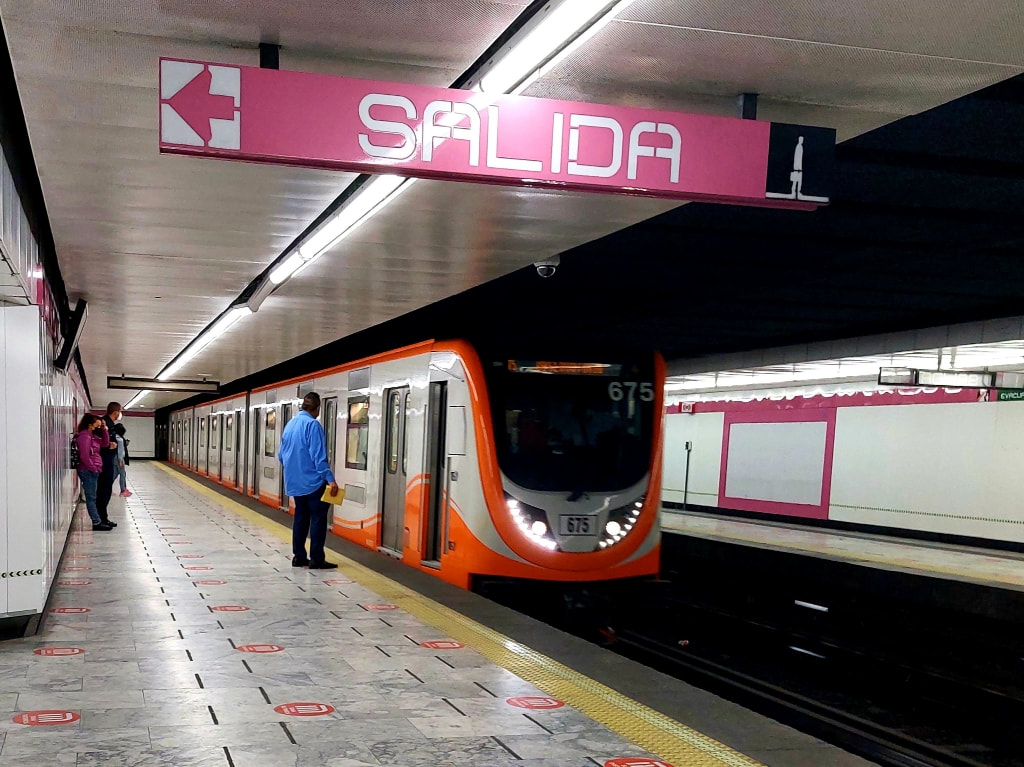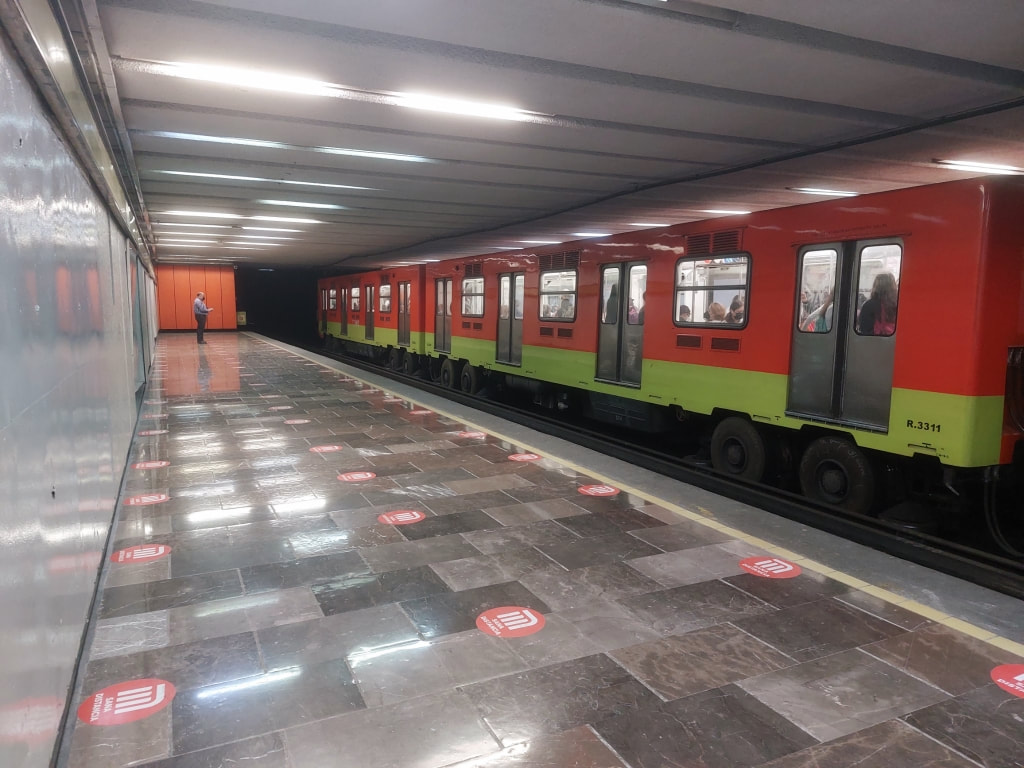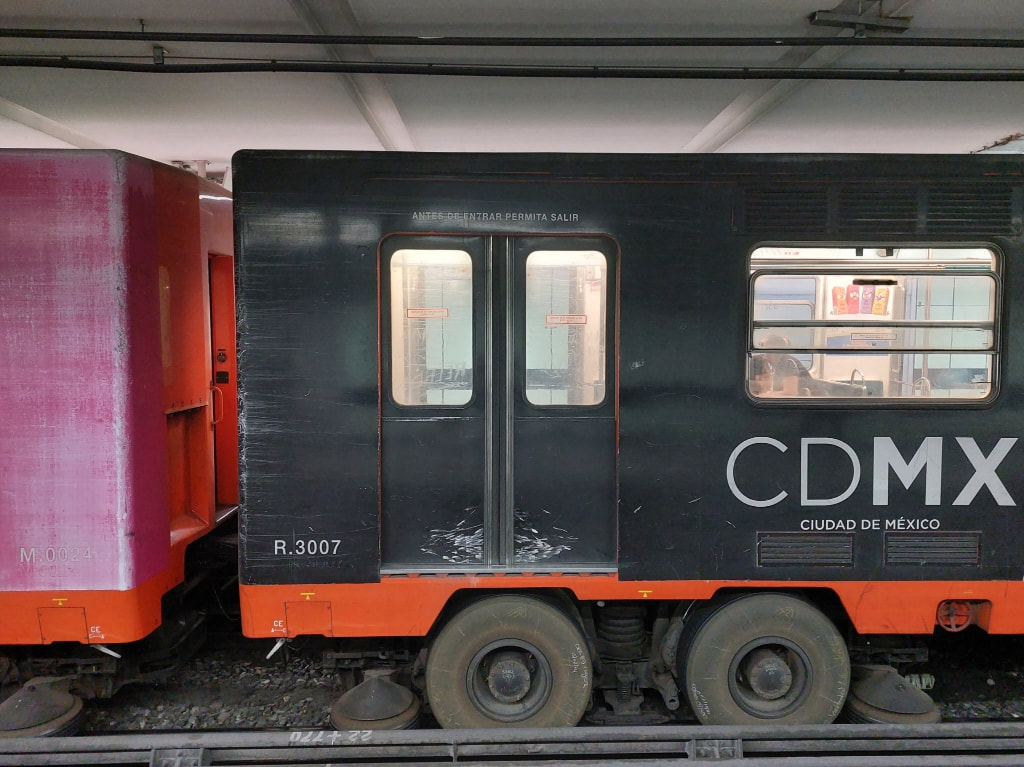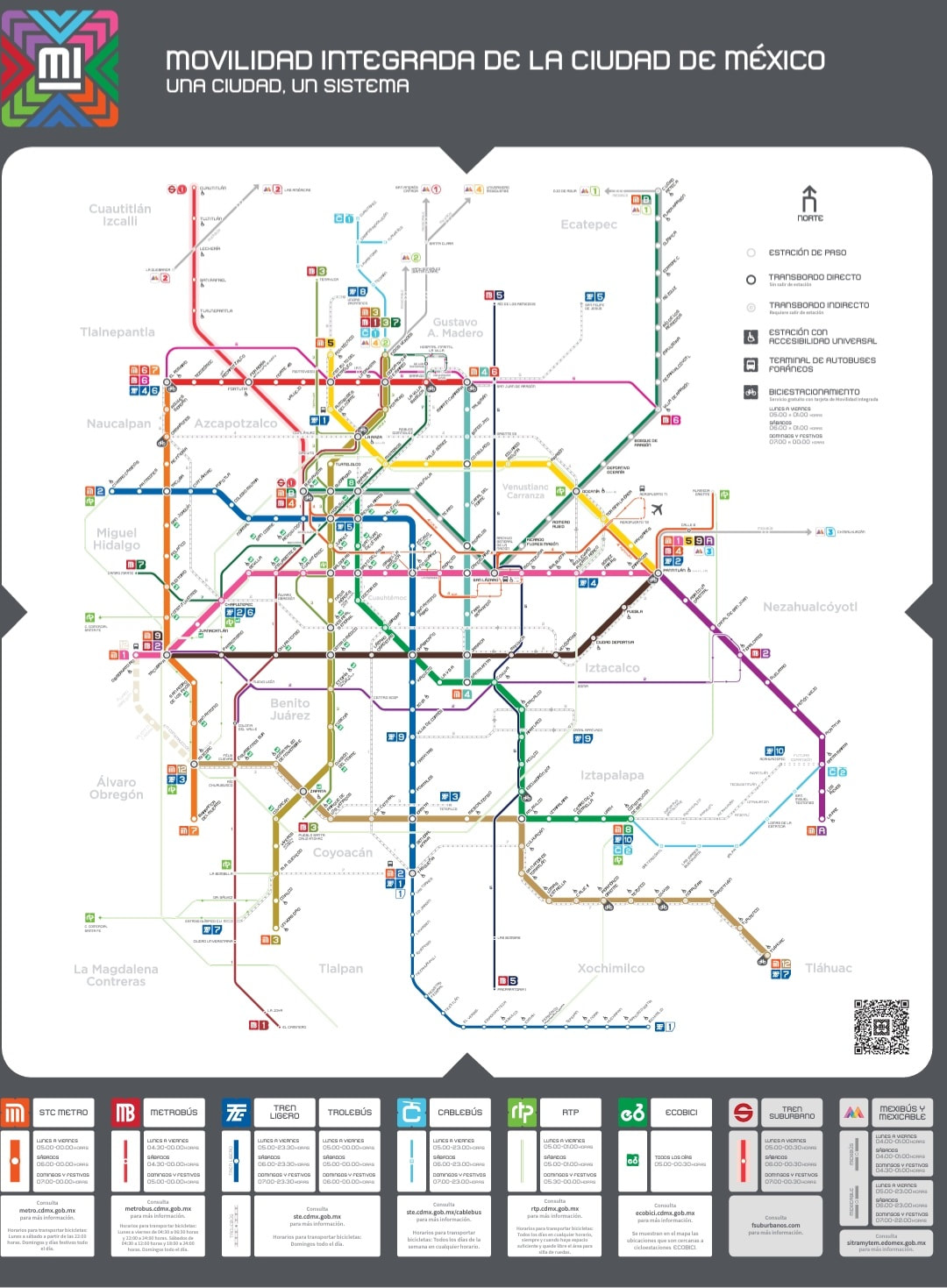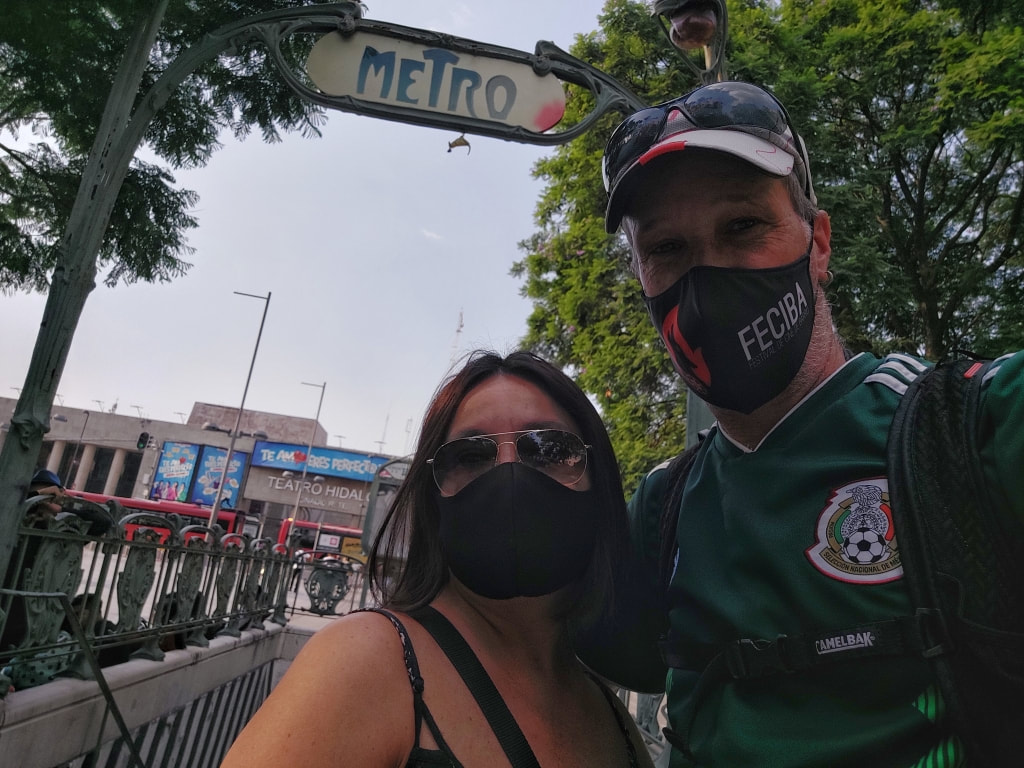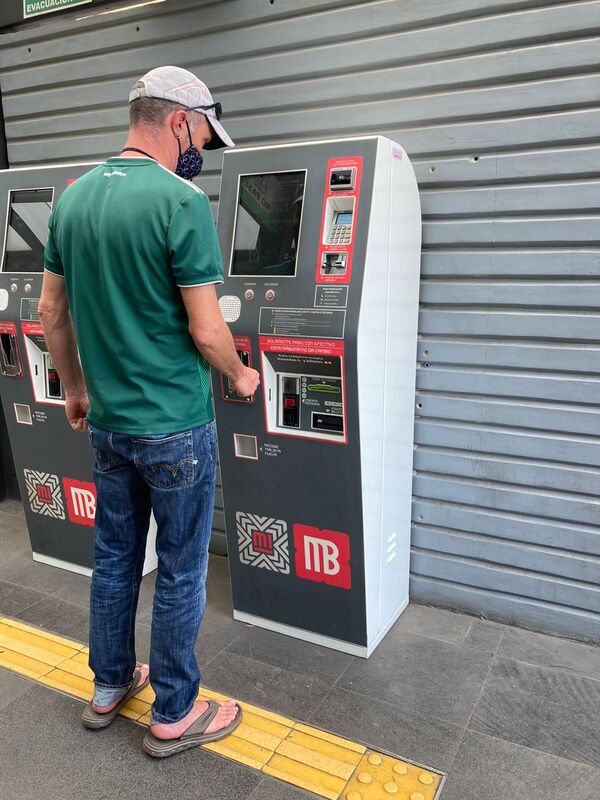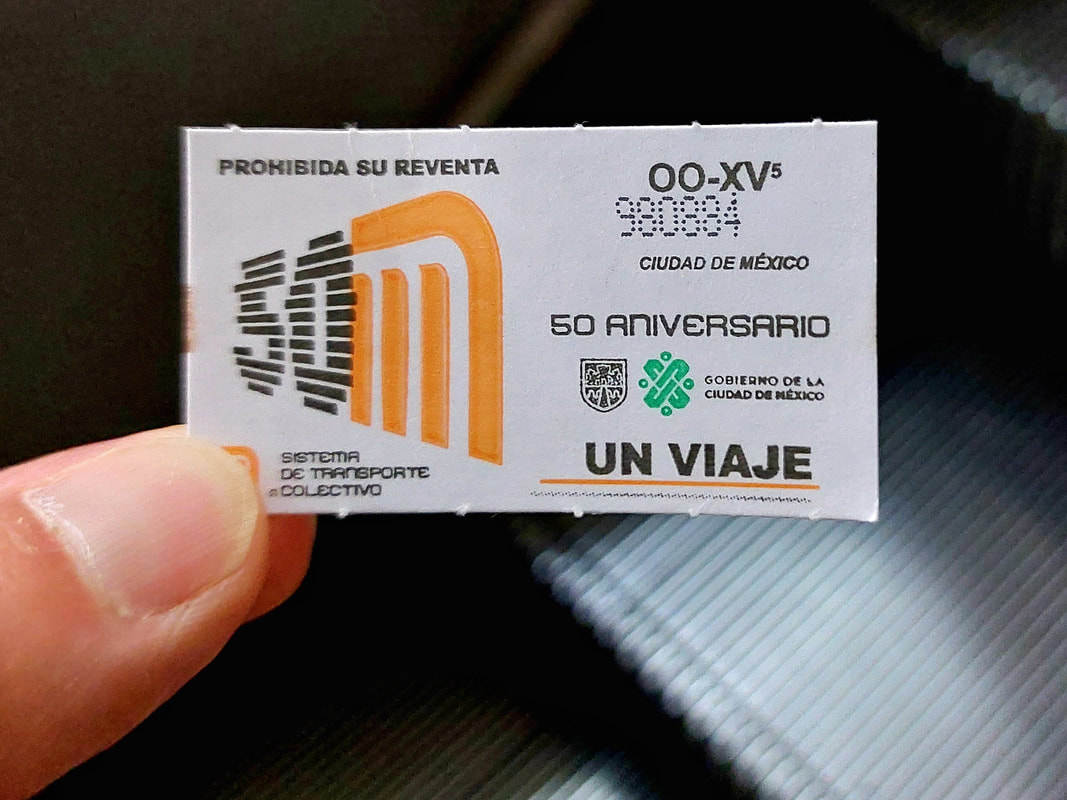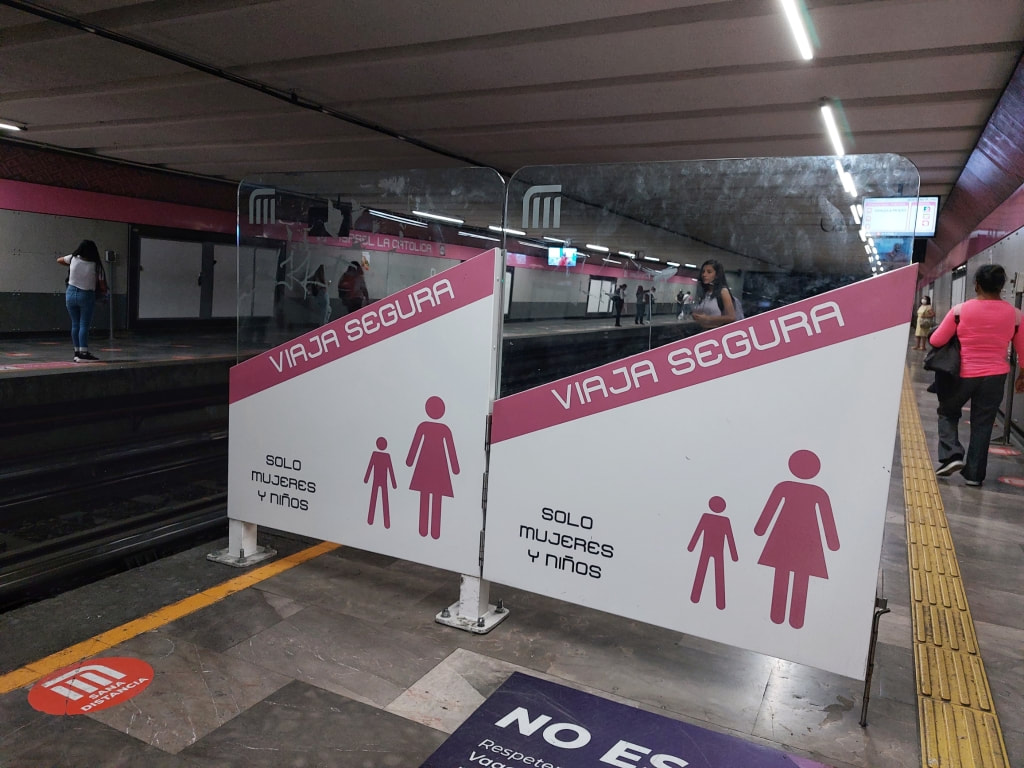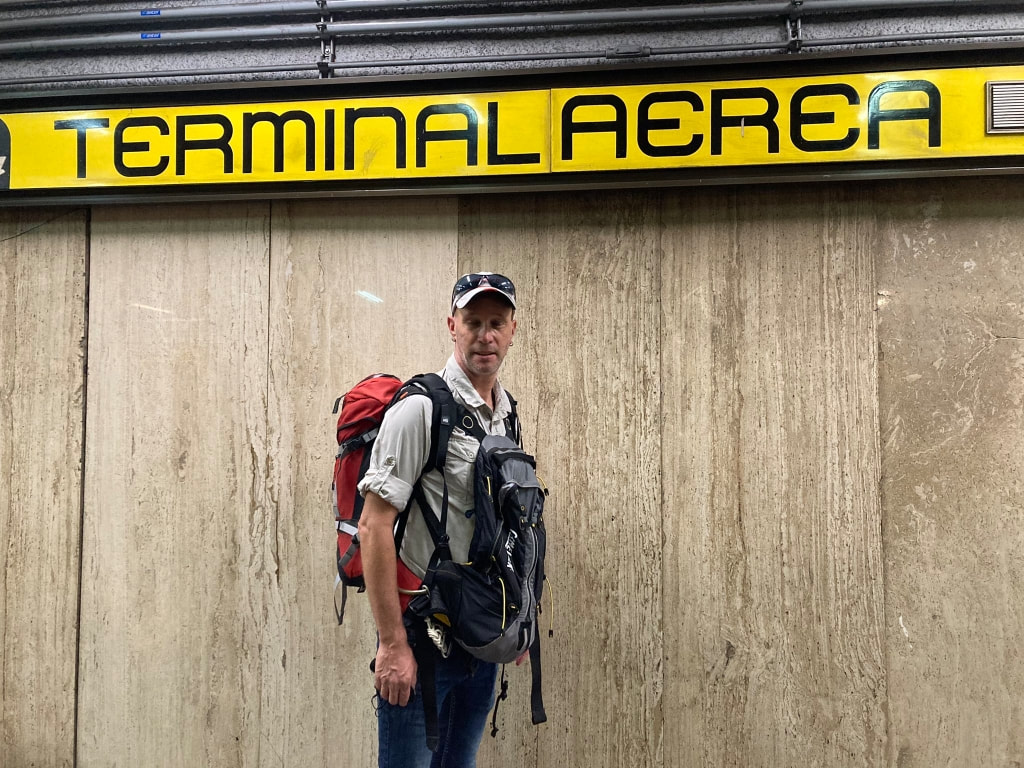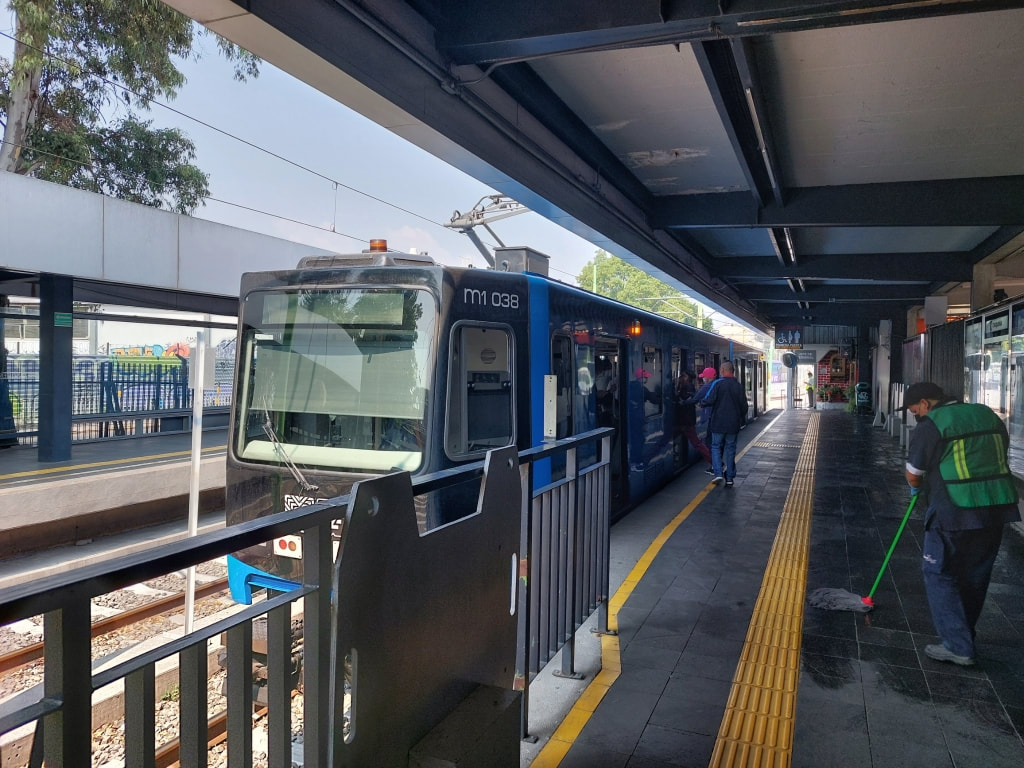How to use the Metro in Mexico City
Updated: February 14, 2024 | Tagged Mexico, Travel Hacks
The Mexico City Metro is the 2nd biggest in the Americas after the New York Subway and as of 2019 was the 10th busiest in the world.
With its 12 lines, 200 km of track and 195 stations, the Mexico City Metro is the best way for getting around in Mexico City.
If you are living or working here for a longer period, I recommend that you check out my guide to getting around Mexico City using public transportation.
With its 12 lines, 200 km of track and 195 stations, the Mexico City Metro is the best way for getting around in Mexico City.
If you are living or working here for a longer period, I recommend that you check out my guide to getting around Mexico City using public transportation.
Yes there are sometimes delays.
I have often waited 20 or more minutes for the train to depart, the carriages can get very packed, it can be very hot and when the rains come, the stations often get flooded.
But despite these drawbacks, it's better than using the public transport above ground, even better than using the Mexico City metrobús.
I have often waited 20 or more minutes for the train to depart, the carriages can get very packed, it can be very hot and when the rains come, the stations often get flooded.
But despite these drawbacks, it's better than using the public transport above ground, even better than using the Mexico City metrobús.
The Metro is the best way for getting around in Mexico City.
In the last two years I have criss-crossed Mexico City numerous times using the city's metro system which is operated by the Sistema de Transporte Colectivo (STC).
It can get pretty congested, especially at rush hour and some times there are delays but it sure as hell beats trying to get around the city above ground. The traffic is mental.
Of the 195 stations, 115 are below ground, 54 are surface stations and 26 are elevated stations. There are 44 interchange stations.
Each line has a colour. Line #1 is the pink line for example.
And each station has its own unique symbol. The idea behind this was for when the literacy rate in Mexico was low and the symbols for the first 3 lines were designed by Lance Wyman and there was always a reference to why the station was given a certain symbol but now even with high literacy rates the symbols are still used and with 195 stations it is no longer easy to see the meaning behind each symbol.
It can get pretty congested, especially at rush hour and some times there are delays but it sure as hell beats trying to get around the city above ground. The traffic is mental.
Of the 195 stations, 115 are below ground, 54 are surface stations and 26 are elevated stations. There are 44 interchange stations.
Each line has a colour. Line #1 is the pink line for example.
And each station has its own unique symbol. The idea behind this was for when the literacy rate in Mexico was low and the symbols for the first 3 lines were designed by Lance Wyman and there was always a reference to why the station was given a certain symbol but now even with high literacy rates the symbols are still used and with 195 stations it is no longer easy to see the meaning behind each symbol.
Metro Map Mexico City:
Me and Miss CDMX at the Belles Artes Metro Station in Mexico City, with the Parisian-style metro sign:
The oldest line, Line #1 is currently under reconstruction and is only running from Pantitlan to Isabel la Catolica. There is a replacement bus service running to Observatorio and is in total chaos. If you are travelling West, the metro takes you to Isabel la Catolica, but going East you have to pick up the metro in Pino Juarez. Best avoid it until they finished it.
The Mexico City Metro operates to the following schedule:
• Weekdays from 5 am to midnight
• Saturdays from 6 am to midnight
• Sundays & Holidays from 7 am to midnight.
The city's 4 main bus stations (Tapo, Southern Bus Terminal, Northern Bus Terminal and Poniente Bus Terminal) are served by the metro.
The Mexico City Metro operates to the following schedule:
• Weekdays from 5 am to midnight
• Saturdays from 6 am to midnight
• Sundays & Holidays from 7 am to midnight.
The city's 4 main bus stations (Tapo, Southern Bus Terminal, Northern Bus Terminal and Poniente Bus Terminal) are served by the metro.
How much is the metro in Mexico City:
The metro fare in Mexico City is 5 Pesos. You need to buy a Metro Card, officially known as an Integrated Mobility Card. The card costs 15 pesos which you can buy at the metro stations or at the Metrobus stations and then you just ned to top it up. You need the same card for travelling on the TrolleyBus and Metrobus as well as the Metro.
You can top it up at the Metro Bus Stations too which is slightly more convenient as the taquillas at the Metro stations are some times closed.
Topping up my Mexico City Metro Card at the local MetroBus station:
You can top it up at the Metro Bus Stations too which is slightly more convenient as the taquillas at the Metro stations are some times closed.
Topping up my Mexico City Metro Card at the local MetroBus station:
You can also top it up using the Mercado Pago app.
You need to swipe the card to pass through the turnstiles on entering the metro but not on exiting.
There is no grace period when switching from the Metro to the MetroBus or vice versa despite some reports saying there is. You must pay again.
The singe trip tickets are NO LONGER useable. You must use the Integrated Mobility Card:
You need to swipe the card to pass through the turnstiles on entering the metro but not on exiting.
There is no grace period when switching from the Metro to the MetroBus or vice versa despite some reports saying there is. You must pay again.
The singe trip tickets are NO LONGER useable. You must use the Integrated Mobility Card:
My Best Tips on How to use the Mexico City Metro
• Avoid using the Metro during rush hour.
From 7 am until 9 am heading into the centre and from 5 pm until 8 pm heading out of the centre is best avoided. The queues to get on the trains can be 10 deep. It just becomes one manic scrum.
• Watch your pockets and belongings.
As in all cites around the world, professional pickpockets work the metro. If you have a phone, do NOT keep it in your back pocket. Keep it in your front pocket and put one hand in too.
• Hang on.
With one hand in your pocket with your phone in, use the other hand to hang on tight. The metro does have a habit of breaking sharply.
• On travelling to the airport, or bus terminal, if you have a lot of luggage, best use an UBER.
I have used the Metro many times to get to and from Terminal 1 at the Aeropuerto Internacional Benito Juárez. It is ok with just a small backpack but not during the rush hour and if you travel with a lot of stuff, I wouldn't do it at any time. Just use an UBER or Airport Taxi (the Pink and White taxis are best avoided, period, and not just for runs to the airport).
• Be prepared.
At each stop, the metro does not for very long. The doors open for just around 10 seconds. There is no announcement inside the metro for the stations, the station names can flash past before you have a chance to register them and if you are standing, which is more often the case, you can't see the name plaque anyways.
But assuming you know that your stop is coming up, shuffle towards the doors in plenty of time, always watching your phone with one hand and hanging on with the other and get out sharpish. The opening and closing of the doors is accompanied by a loud beep-beep.
• Women and kids under 12 can use designated carriages on both the Metro and MetroBus:
From 7 am until 9 am heading into the centre and from 5 pm until 8 pm heading out of the centre is best avoided. The queues to get on the trains can be 10 deep. It just becomes one manic scrum.
• Watch your pockets and belongings.
As in all cites around the world, professional pickpockets work the metro. If you have a phone, do NOT keep it in your back pocket. Keep it in your front pocket and put one hand in too.
• Hang on.
With one hand in your pocket with your phone in, use the other hand to hang on tight. The metro does have a habit of breaking sharply.
• On travelling to the airport, or bus terminal, if you have a lot of luggage, best use an UBER.
I have used the Metro many times to get to and from Terminal 1 at the Aeropuerto Internacional Benito Juárez. It is ok with just a small backpack but not during the rush hour and if you travel with a lot of stuff, I wouldn't do it at any time. Just use an UBER or Airport Taxi (the Pink and White taxis are best avoided, period, and not just for runs to the airport).
• Be prepared.
At each stop, the metro does not for very long. The doors open for just around 10 seconds. There is no announcement inside the metro for the stations, the station names can flash past before you have a chance to register them and if you are standing, which is more often the case, you can't see the name plaque anyways.
But assuming you know that your stop is coming up, shuffle towards the doors in plenty of time, always watching your phone with one hand and hanging on with the other and get out sharpish. The opening and closing of the doors is accompanied by a loud beep-beep.
• Women and kids under 12 can use designated carriages on both the Metro and MetroBus:
There is also the Tren Ligero which runs from Tasqueña to Xochimilco which is convenient for visiting the biggest stadium in Mexico, the Estadio Azteca football stadium. You need to use the metro card for travel on the Tren Ligero. Each ride is 3 pesos.

